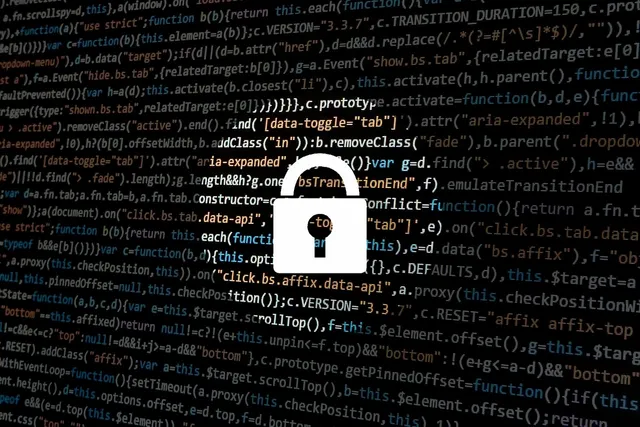ID-Based Blind Signature and Its Mode of Operation
INTRODUCTION:
ID based blind signature (IBBS) is an identification based abuse of signature techniques which incorporates both blind signatures and identity based systems. According to ID based systems, there is no need for the user to provide a certificate since public key cryptographic values are derived from the user identifier as in the case of emails. This is also called asymmetric signature or blind signature because allowing a signer to sign a message makes it possible to obtain a signature on a message without presenting the message itself for the signer. This approach is useful in applications such as anonymous voting, e-cash, and privacy enhanced authentication systems that require identity protection of users.
IBBS allows the user to be completely anonymous while assuring that the required identification has been made. For instance, traditional blind signatures prevent the signer from seeing the message being compliantly signed, and therefore such systems do not concern themselves with the identity of the user. The correlation permits as though blindness is exercised during signing, the signer can still be ascertained later. This is important for such situations whereby one is required to be both private and accountable at the same time.
The steps involved in the ID-Based Blind Signature process includes message blinding, Identity based key generation, signing and, signature verification. The steps are aimed at ensuring privacy and security such that even though the contents of the messages are signed, the contents do not have to be disclosed, although the contents are verifiable.
- MESSAGE BLINDING:
The first stage in the IBBS process is that of message blinding. The message to be signed is altered or “blindfold” before being presented to the signer. The user hides part of the message upon witnessing it, so that the signer is unable to know its true meaning. This is a very important step in preserving the privacy of the user because the signer cannot have any information about the message while signing.
This focuses on guaranteeing that the signer really does place a signature on the message yet remains in ignorance of the contents of the message signed. The blinding process contains the use of certain state-of-the-art techniques, which hide the contents of the message, such that the message can still be retrieved after the signer has signed it. This is a very critical step in some applications like anonymous payment or secure online ballot box systems, where the anonymity of individuals is of utmost priority.
After the message is blinding, it is transmitted to the signer where the signature is executed. There is a limit to the message that a signer can come into contact with and this is only the blinded message. This step lays down the principles upon which the confidentiality and integrity of the message will be upheld throughout the process.
- IDENTITY-BASED KEY GENERATION:
At the second step, the creation of the signing keys makes use of identity-based encryption. In such a system, the public key of the user is based on who one is, for instance, an email address or social security number. The respective private key is generated by a certifying body generally called the PKG.
The benefit of such a system is that there is no need for the use of normal certificates as the users’ ID is sufficient enough to derive the public key. This makes managing keys in very huge systems easier. The PKG makes sure that the signing procedure is performed by valid users only with authenticated identities thus enhancing security.
After the generation of the keys, the signer comes and uses her private key to sign the maligned message. The signer is still able to put his or her signature on the document despite not knowing its contents, thus the identity of the user who has signed the document is known without infringing on that person’s privacy.
- SIGNING THE BLINDED MESSAGE:
Once the message has been obscured and the identity-based keys created, the signer takes his private key in order to sign the message. The message is obscured and consequently, the signer does not have access to the unsigned message but he/she is still able to carry out the cryptographic techniques that are necessary for coming up with an appropriate signature.
This way of signing the blinded message guarantees the signer that the message will remain intact even if its content is not available to them. This procedure is particularly important in blindable signature protocols where a user wishes to get a signer’s endorsement without exposing the details of the endorsement to the prospective signer.
As soon as the signing is done, the user is given back the signed document with the obscured signature on it. This time around the user has the ability to remove the blinding of the signature which contains a lawful IgM-RNPc antibody against the unblinded alias or the original targeted message. The act of unbinding is insulated in that it leaves the message on the public domain such that it can be accessed and verified by anyone but the signer of the message does not know the content of the message they appended their signature on.
- SIGNATURE VERIFICATION:
The last step in the IBBS process is witnessing the signature. When a user unblinds the signed message, they are able to check if the signature is corresponded with any public key that is associated with its signer. This verification is necessary to ensure that the concerned signature is actually put and not a single word is altered in the context.
This allows for verification, which provides assurance that the signature came from the right person, thus making it possible to trace back the message to its composer. In scenerios involving ID-Based Blind signatuers, such an identity-based system enhances users’ experience as key management is made much easier because users are able to derive the public key as per the signer’s id without the use of certificates.
This confirmation process must be in use cases like electronic currencies or secure elections where the concepts of privacy and responsibility co-exist. That is, it guarantees that messages will be confirmed while preserving the user’s anonymity in the signing phase.
CONCLUSION
The ID-Based Blind Signature strikes the right balance between privacy and verification of identity and is thus applicable in many privacy centred applications. The way it works, which includes graying out messages, generating keys based on identities, signing and verifying the signer, helps conceal the content of the message from the person signing it as one is still able to authenticate the signer. As a result, this makes it an essential weapon for e-voting, electronic money and secure login systems, where the two aspects of privacy and accountability are both important.
.webp)
.webp)
.webp)
https://x.com/steemblogger/status/1844983649650823601
Upvoted! Thank you for supporting witness @jswit.
Congratulations on bringing a quality content. You have earned a positive vote from team 2, and it is delivered by @starrchris.
Many Blessings...🙏🏻
Note:- ✅
KINDLY JOIN PUSSFI DISCORD SERVER FOR MORE DETAILS!
Regards,
@jueco